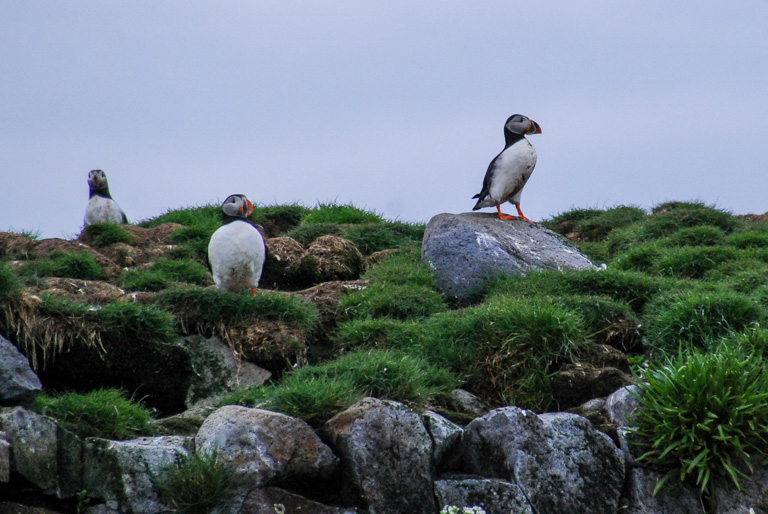- A camera trap in Iceland captured video of an Atlantic puffin using a stick to scratch itself.
- The discovery, along with a similar observation in Wales in 2014, is the first evidence of tool use in seabirds.
- The findings suggest that seabirds like puffins may be more intelligent or possess greater problem-solving skills than once thought.
The camera traps that ecologist Annette Fayet had set up didn’t provide the clues she had hoped to find about puffin diets and nesting behavior. What they did provide, though, was some of the first evidence of tool use by a seabird.
A 10-second video captured on an Icelandic island shows an Atlantic puffin, Fratercula arctica, picking up a stick and scratching itself. The discovery, along with a similar observation from 2014 in Wales, extends the ability to use tools to a new group of birds and raises questions about intelligence, cognition and whether this unusual behavior may be lurking elsewhere in nature.
My camera traps to study #puffin diet didn't work that well for their intended purpose, but one picked up another interesting behaviour! Evidence of tool use in a #seabird, with @dora_biro_& @ErpurSH now out in @PNASNews. @InsideNatGeo @OxZooDept https://t.co/FRtnkmMk2G pic.twitter.com/hJzK9b6NGb
— Annette Fayet (@AnnetteFayet) January 6, 2020
The subset of tool-using animals was once thought to be a fairly exclusive club, with membership limited to intelligent species known for their problem-solving behavior. Until now, the authors write, scratching has only been seen in cerebral heavyweights like our primate cousins and elephants.

But the discovery of other animals modifying and leveraging objects in their environment to suit their purposes has prompted something of a rethink of how we understand cognition. Recently, scientists recorded a family of Visayan warty pigs (Sus cebifrons) digging with bark and branches at a zoo in Paris.
Fayet and her colleagues think that the itchy puffin filmed in 2018 on Grimsey Island may have been using the stick to go after ticks, which were particularly bad for Iceland’s puffin population that year. The team notes that the behavior is clearly distinct from the collection of softer grasses and feathers used in puffin nests.

The evidence from two birds, at locations more than 1,700 kilometers (1,060 miles) from each other, also demonstrates that the tactic didn’t just arise in a single population. It’s possible that each bird came up with the idea of using a stiff stick to scratch independently, the authors write. Or, they might have learned it from another puffin. Either case could be evidence that seabird intelligence may have been “underestimated.”
“Our finding … warrants further studies on seabird cognition,” the researchers add, “a topic almost entirely unstudied but clearly rife with opportunity for future research.”
Banner image of puffins in Iceland by John C. Cannon/Mongabay.
Citation:
Fayet, A. L., Hansen, E. S., & Biro, D. (2019). Evidence of tool use in a seabird. Proceedings of the National Academy of Sciences, 201918060. doi:10.1073/pnas.1918060117
FEEDBACK: Use this form to send a message to the author of this post. If you want to post a public comment, you can do that at the bottom of the page.
